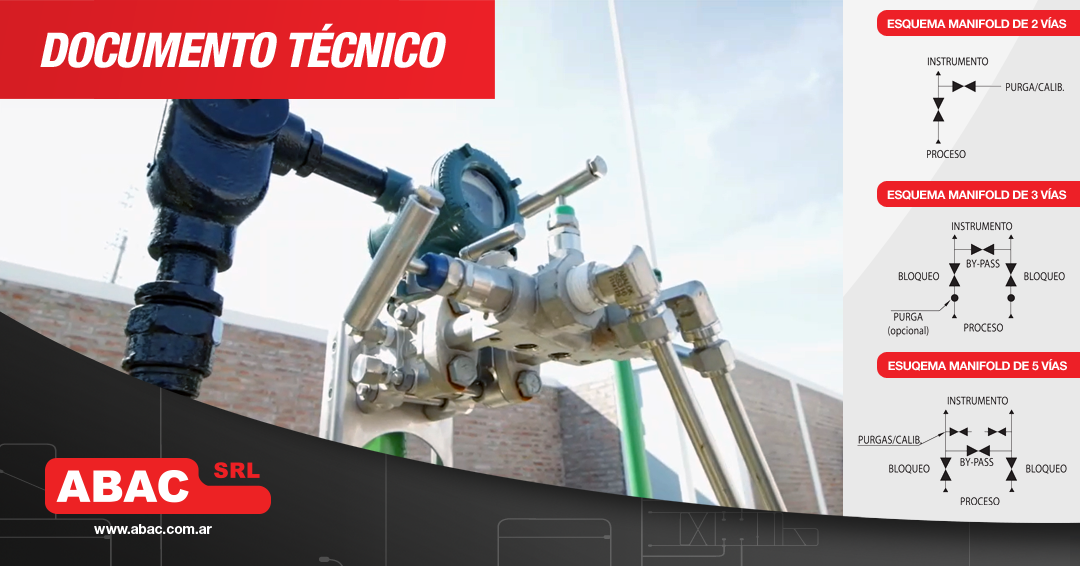
The manifold is the link between the pressure instrument and the process, allowing safe and reliable operation of the instrument.
ABAC integral manifolds cover a wide field of applications through their different configurations. They combine all the operations in only one unit; reducing substantially the quantity of fíttings involved, saving in this way mounting labor, limiting the leak risks and cutting acquisition and maintenance costs.
In general they can be classified by the number of ways or valves. But also by the type of connections, threaded or flanged, depending on the connection of the process and the instrument. The maximum working pressure, on the other hand, is 6000 psi.
To know which ABAC manifold you should use in your application and how to operate it, we invite you to read the following Technical Document:
2-valve Manifolds
They provide the block and purge effects required in the installation of manometers, pressure switches and static pressure transmitters. In normal operation, the block valve remains opened, and the purge or equalization valve remains closed. In order to unmount the instrument and to verify the zero, you have to close the block valve and to depressurize with the purge. It is also possible to use the threaded purge outlet to enter a known signal, closing the blocking and to check, in this way, the mounted instrument without removing it.
Models:
MP/MPR 2-valve manifold for threaded instruments
MPB 2-valve manifold for flanged instruments
MCP2 2-valve Flat manifold
3-valve Manifolds
They combine two main block valves and an equalizer or by pass, necessary for the gauge and differential pressure transmitters mounting.
Normally the block valves are opened and the equalization valve is closed. In order to check the instrument zero, the by pass is opened and the downstream block is closed.
In this way the pressures at both sides of the instrument are leveled. To dismount it, the other block has to be closed, making it possible to remove it. In order the instrument to be in use again and with the by pass opened, the two block valves have to be completely opened. Then the equalizer has to be closed establishing the Δp between the branches.
Optional purge ports on the process side are offered to purge the instrument “legs” or also to work with applications which need a continuous purging process.
Models:
M1 3-valve manifold. Threaded connections
M4/M4R 3-valve manifold for flanged instruments
MCP3 3-valve Flat manifold
5-valve Manifolds
As the 3-valve manifolds, the 5-valve manifolds are used for the differential pressure instrument mounting. They have two block valves, one equalizer valve and, on the instrument side, they add two additional purge valves for vent or calibration. Therefore, they add other contrast/calibration operations to the 3-valve operations, since a known signal can be entered through the purge connections (threaded), in order to check the mounted instrument without removing it. Or also to connect a test instrument on them to compare. They also allow to purge the instrument and the process (opening the blocks).
In gas flow measurements it is advisable to use the double equalizer valve version in order to assure the watertightness between the high and low pressure connections.
Models:
M5 5-valve manifold. Threaded connections
M5B/M5BR 5-valve manifold for flanged instruments
M6 Metering manifold
MCP5 5-valve Flat manifold






